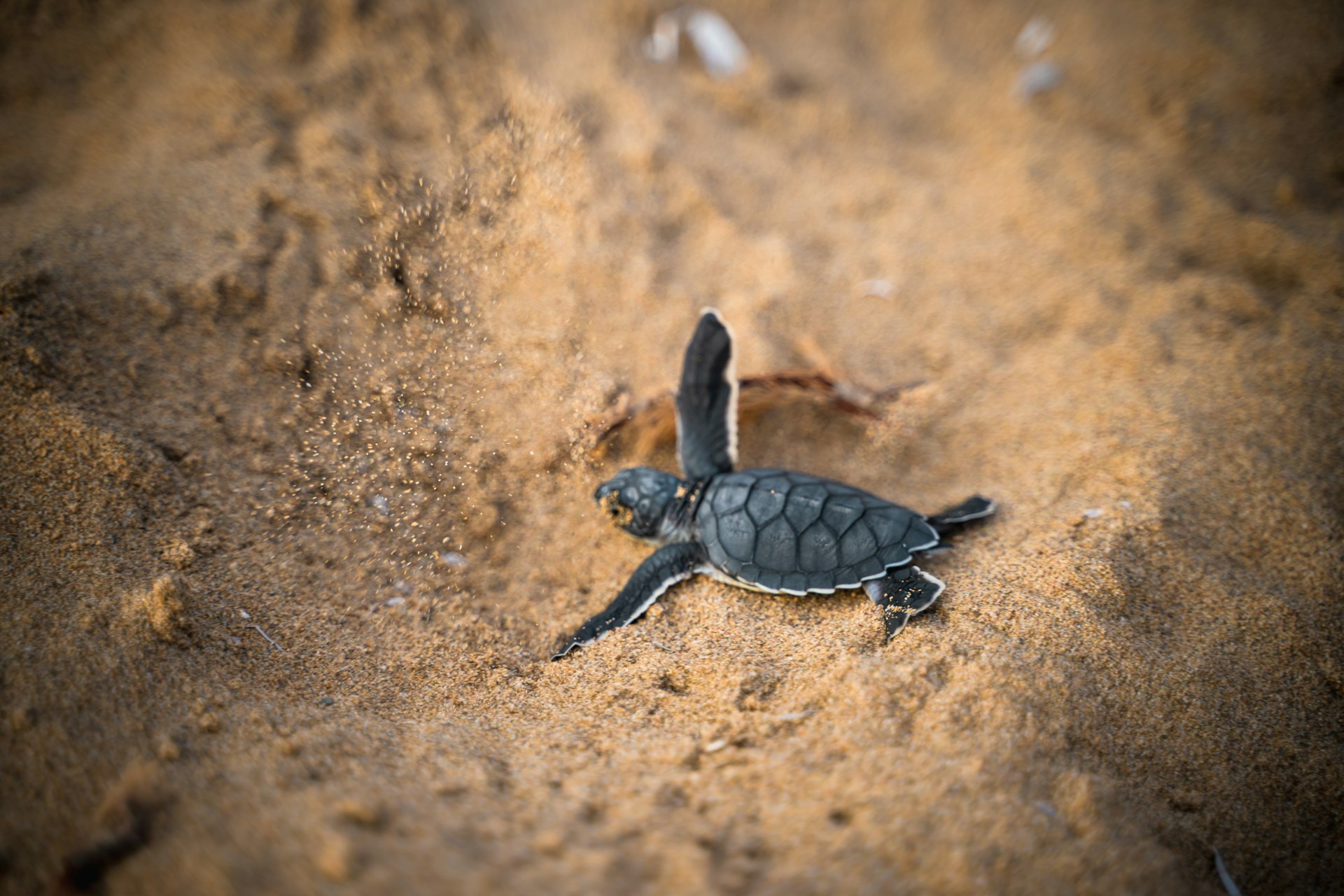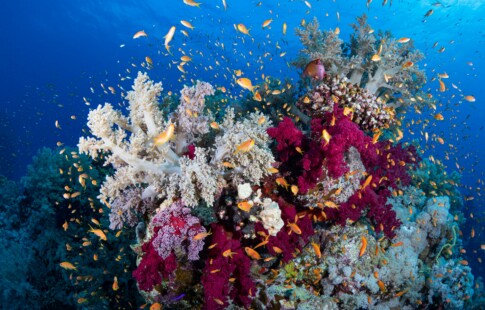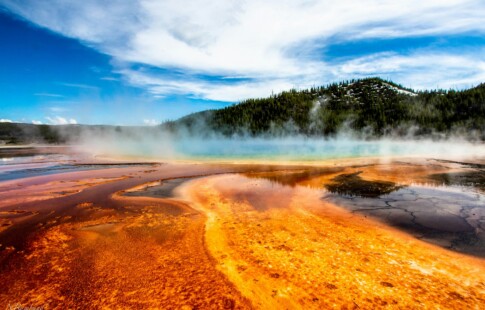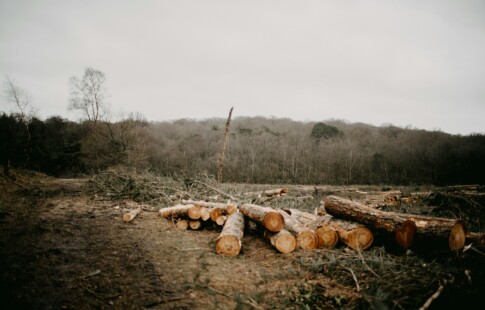
A Story of Survival: The Plight of Baby Sea Turtles
We are reader-supported. When you buy through links on our site, we may earn affiliate commission.
Few realize the treacherous journey baby sea turtles embark on to survive to adulthood. Faced with numerous threats that have endangered all turtle species, these remarkable warriors are steadfast in their efforts to make it from the nest to the sea.
Fortunately, several grassroots conservation efforts have successfully increased hatchling rates locally to ensure their survival and boost population numbers.
Endangered and Threatened: Sea Turtles in Rapid Decline
The United States has six sea turtle species in its waters — loggerhead, green, leatherback, Kemp’s ridley, olive ridley, and hawksbill — all listed as endangered. Some turtles are actually critical ocean predators, creating balance within marine food chains. For instance, hawksbills eat sea sponges, which damage coral reefs if left unchecked. Because of this, their recovery and protection are a priority for conservationists.
Sea turtles live in shallow waters worldwide except for polar seas. Males spend their entire lives swimming in the ocean while females lay their eggs on land. For over 100 million years, these species have demonstrated their built-in navigational system, with females journeying to where they hatched from to build their own nests.
Sea turtles travel long distances — leatherbacks, in particular, migrate 10,000 or more miles annually — putting them at risk of significant threats. One of the most dire threats is nesting and foraging habitat loss from pollution, development, and climate change. However, it’s not uncommon for sea turtles to become bycatch in fisheries, entangled in marine gear, or struck by moving vessels.
Other human activities have also contributed to their demise. For instance, the 2010 Deepwater Horizon oil spill killed and harmed 166,000 sea turtles in the Gulf of Mexico — a marine area still trying to recover 15 years later.
From Sands to Sea: The Epic Journey of Baby Sea Turtles
Despite their ability to live over 40-60 years, sea turtles must first survive a harrowing plight from their nests to the deep blue. Only one in 1,000 baby sea turtles make it to adulthood, often succumbing to dehydration and being preyed upon by birds, crabs and other coastal wildlife.
The Loggerhead Marinelife Center says a female turtle creates her nest overnight, using her flippers to dig a deep hole for her eggs. Typically, one nest holds 80-120 eggs, which she covers with sand before returning to the sea.
The eggs incubate for about 60 days, during which ground temperatures determine the sex of each hatchling — warmer sands are associated with more females, while cooler sands produce more males. When incubation is complete, the hatchlings will emerge and spend days digging their way out of their nests.
Baby sea turtles are most vulnerable as they scurry to the open ocean. Those who reach it must swim for 24 hours to escape coastal dangers. While scientists haven’t learned what happens in the following years, they believe the turtles undergo significant growth, offering greater protection from larger marine predators. Their maturation allows them to return to coastlines as juveniles and adapt to their adult lives.
4 Conservation Initiatives Saving Baby Sea Turtles
Although larger organizations and grassroots initiatives organize to save baby sea turtles worldwide, several programs, including these four sea turtle watch groups, significantly contribute to their conservation in the U.S.
1. Oak Island Sea Turtle Protection Program
The Oak Island Sea Turtle Protection Program is located in Oak Island, North Carolina, where the local community devotes their time to sea turtle conservation. The initiative monitors and safeguards sea turtle nesting areas by patrolling the beach, relocating nests as needed, and mitigating threats.
In 2024, the Oak Island-based program recorded 79 nests, 6.135 hatchlings, and a mean hatch success rate of 76.8%. About 89.8% of the nests had at least a 10% emergence rate of hatchlings.
2. Beaches Sea Turtle Patrol
The Beaches Sea Turtle Patrol (BSTP) in Jacksonville, Florida, oversees 7.5 miles of shoreline where loggerhead sea turtles predominantly like to lay their eggs. Passionate volunteers patrol the beach every night during nesting seasons, marking turtles and tracking hatchings.
BSTP’s 2024 season had 81 nests, of which only one was lost. Of 8,896 eggs laid, 6,586 hatchlings emerged for a success rate of 71.7%.
3. Sea Turtle Conservation Curaçao
Many sea turtle populations enjoy Caribbean waters, making it a popular site for baby sea turtles. The Sea Turtle Conservation Curaçao is well known for rescue and rehabilitation, searching for and mitigating threats to turtles on beaches several times weekly.
The conservation group records nesting activities from June to December and provides first aid to turtles in need. The program also patrols the area twice daily and conducts clean-ups to ensure safe conditions for turtles and hatchlings.
4. Alabama Coastal Foundation
The Alabama Coastal Foundation’s (ACF) Share the Beach program is dedicated to improving and protecting Alabama’s coastline. From May to October, sea turtles lay eggs on the Gulf Coast’s white-sand beaches.
Volunteers conduct beach monitoring during the nesting season, observe the nests overnight, and educate the public about sea turtle conservancy. The ACF has yet to publish its 2024 overview, but 2023 records show 143 nests were documented in Alabama, with 7,799 hatchlings making it to the ocean. Most nests belonged to green sea turtles, Kemp’s ridley and loggerheads.
How to Help
Everyone can do their part to protect baby sea turtles at home or on the beach. Their survival into adulthood is significantly impacted by plastic pollution. Therefore, it is critical to reduce plastic consumption and recycle correctly.
When spending the day at a local beach or taking a seaside vacation, visitors should take the following precautions:
- Avoid disturbing turtle nests, including when setting up beach equipment and digging.
- Eliminate obstacles that may prevent hatchlings from reaching the ocean, such as filling in holes, knocking down sand structures, and removing all beachwear and accessories at the end of the day.
- Stay off the beach at night.
- Reduce light pollution — otherwise, baby sea turtles may be severely disoriented.
- Volunteer with a local sea turtle conservation initiative or participate in beach clean-ups.
Most importantly, it is critical to leave all hatchlings alone. Sea turtles are highly capable of making it to the ocean without interference. Likewise, it is crucial to notify the police if you see somebody causing harm to nests or bothering sea turtles on the shore. Reporting distressed sea turtles to local authorities is equally vital.
Fighting for Baby Sea Turtles’ Survival
Baby sea turtles are more than cute critters — they’re essential to the marine ecosystem. Creating safer habitats and conditions for hatchlings enables their survival, helps boost sea turtle populations, and ensures a greater balance in ocean biodiversity.
Share on
Like what you read? Join other Environment.co readers!
Get the latest updates on our planet by subscribing to the Environment.co newsletter!
About the author

Steve Russell
Steve is the Managing Editor of Environment.co and regularly contributes articles related to wildlife, biodiversity, and recycling. His passions include wildlife photography and bird watching.





